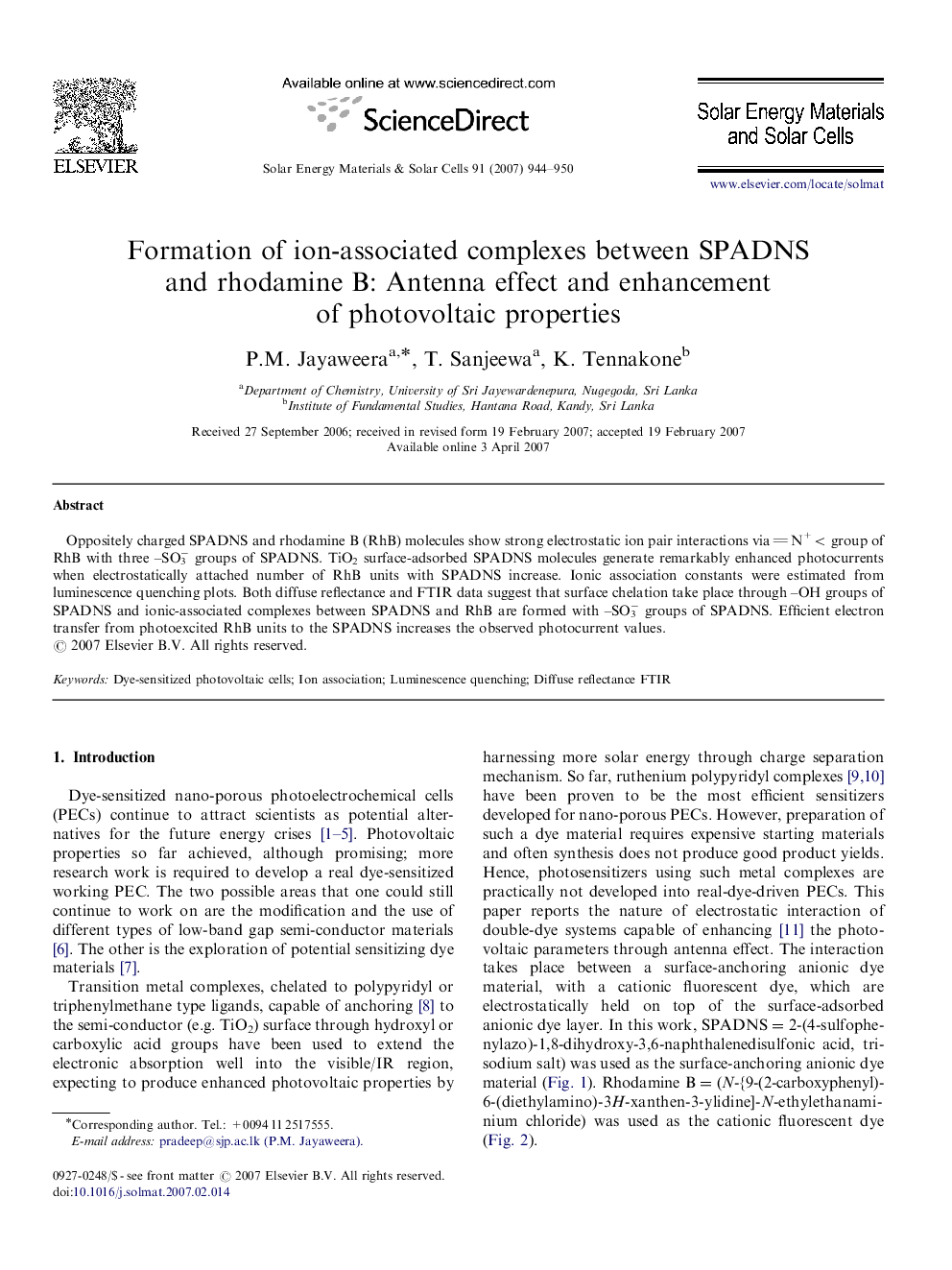| Article ID | Journal | Published Year | Pages | File Type |
|---|---|---|---|---|
| 81140 | Solar Energy Materials and Solar Cells | 2007 | 7 Pages |
Abstract
Oppositely charged SPADNS and rhodamine B (RhB) molecules show strong electrostatic ion pair interactions viaN+< group of RhB with three –SO3− groups of SPADNS. TiO2 surface-adsorbed SPADNS molecules generate remarkably enhanced photocurrents when electrostatically attached number of RhB units with SPADNS increase. Ionic association constants were estimated from luminescence quenching plots. Both diffuse reflectance and FTIR data suggest that surface chelation take place through –OH groups of SPADNS and ionic-associated complexes between SPADNS and RhB are formed with –SO3− groups of SPADNS. Efficient electron transfer from photoexcited RhB units to the SPADNS increases the observed photocurrent values.
Related Topics
Physical Sciences and Engineering
Chemical Engineering
Catalysis
Authors
P.M. Jayaweera, T. Sanjeewa, K. Tennakone,
